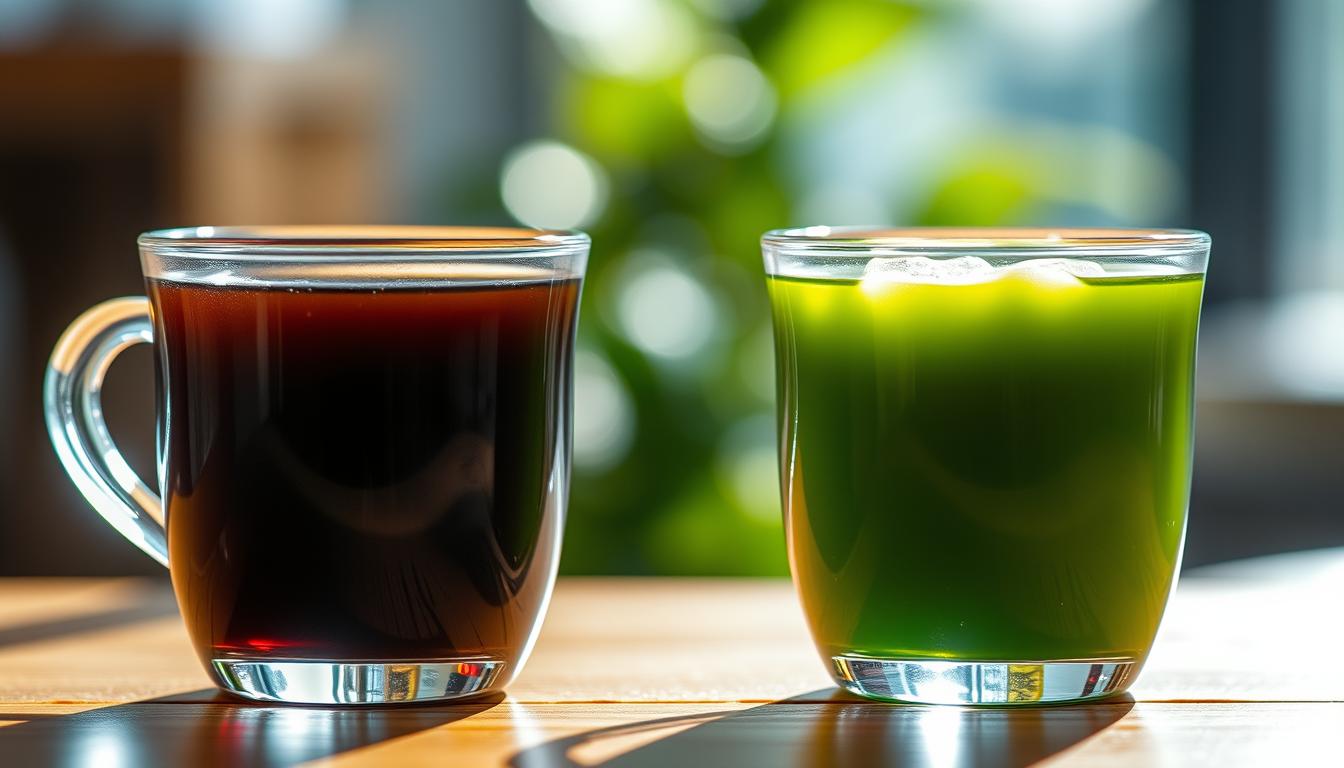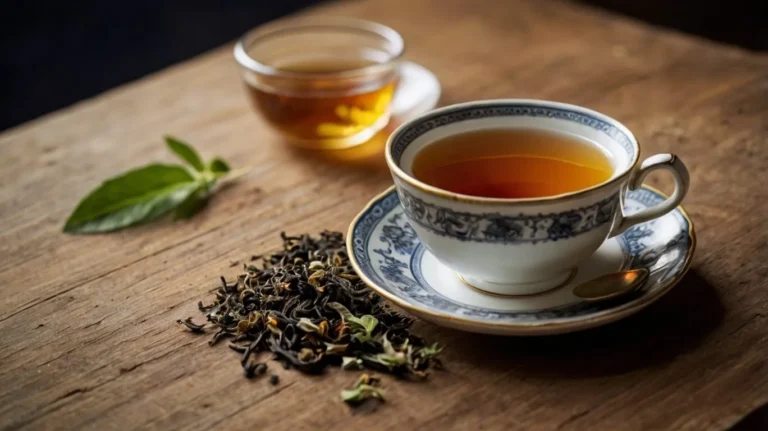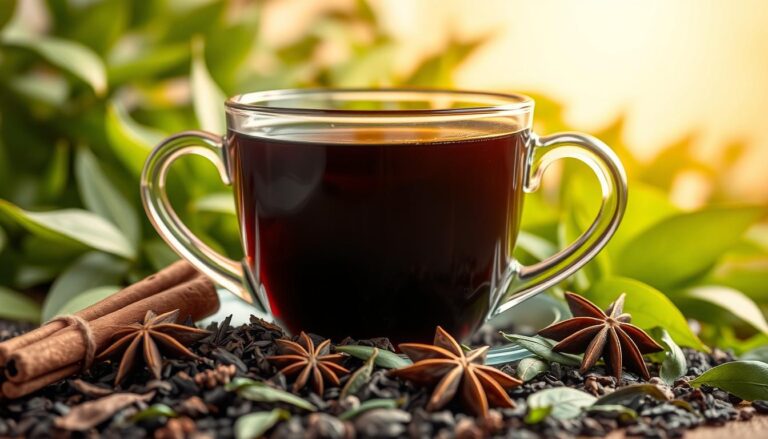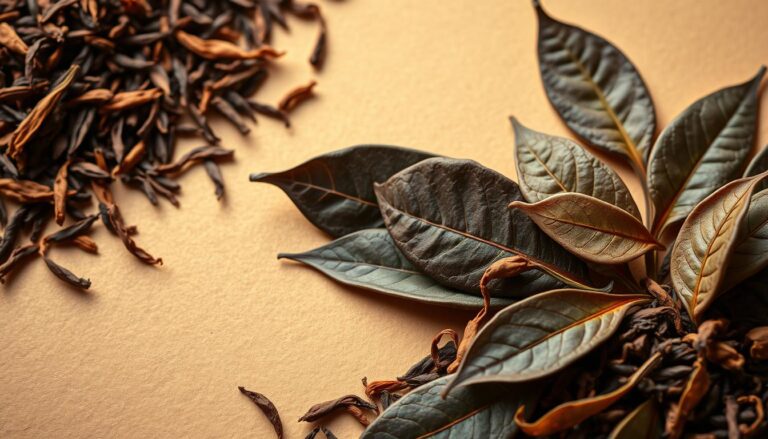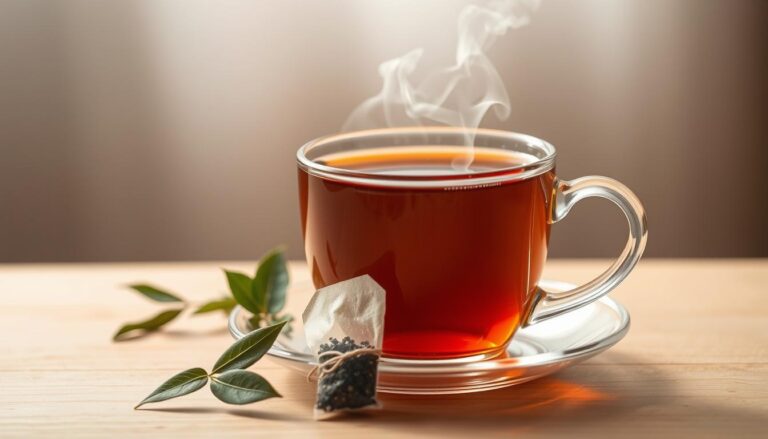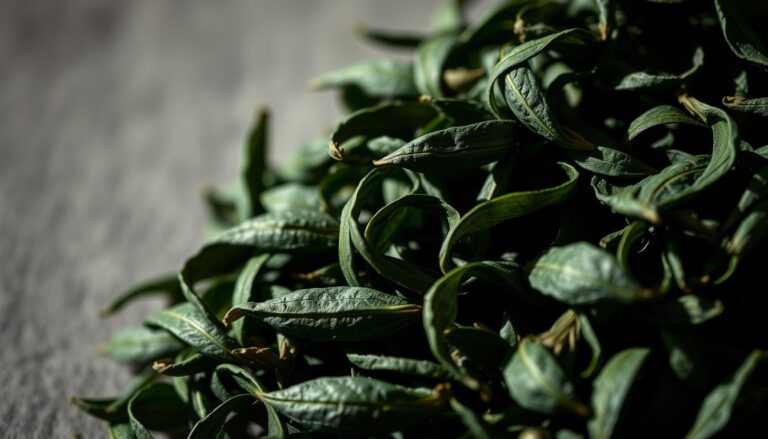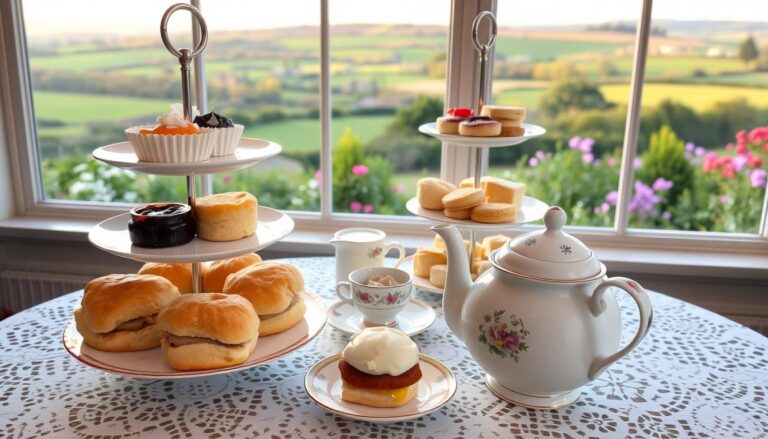Black Tea vs Green Tea: 7 Key Differences You Must Know Before Choosing
Tea lovers, prepare to dive into the world of Black Tea vs Green Tea. Though both come from the same plant, they offer distinct flavors and experiences. Understanding their differences can transform your daily tea routine.
Whether you’re a seasoned tea drinker or just starting out, this guide on Black Tea vs Green Tea will reveal their unique processing methods, health benefits, and cultural roots. Discover why these teas are cherished far beyond the morning cup.
Table of Contents
Key Takeaways
- Black and green teas come from the same plant but differ in processing
- Oxidation levels dramatically impact tea flavor and characteristics
- Caffeine content varies significantly between black and green tea
- Each tea offers unique health benefits and antioxidant profiles
- Brewing techniques play a crucial role in tea quality
Understanding Black Tea and Green Tea: An Overview
Tea is more than a drink; it’s a way to connect with others worldwide. Whether you use a vintage or copper tea kettle, knowing about different teas can make your experience better.
Tea has a long history, with black and green tea being two main types. Each has its own special qualities.
Exploring Black Tea
Black tea is made through a process called oxidation. It started in the 16th century and became popular fast. The steps include:
- Harvesting fresh tea leaves
- Withering the leaves
- Rolling and crushing
- Full oxidation
- Drying and packaging
Understanding Green Tea
Green tea is even older, with history over 4,000 years. It’s different from black tea because it’s not oxidized much. This keeps its green color and soft taste.
“Tea is quiet and our thirst for tea is never far from our craving for beauty.” – James Norwood Pratt
| Characteristic | Black Tea | Green Tea |
|---|---|---|
| Oxidation Level | Full | Minimal |
| Origin Period | 16th Century | Over 4,000 Years Ago |
| Color | Deep Brown/Red | Light Green |
Learning about these teas helps you enjoy the world of tea more. It lets you pick the perfect tea for you.
The Caffeine Content: A Crucial Distinction
When you use your handmade copper tea kettle, knowing about caffeine is key. Each tea has its own caffeine level. This can affect your energy and health.
Tea fans know that black and green teas have different caffeine levels. Your choice depends on how much energy you need and how you react to caffeine.
Comparing Caffeine Levels
The amount of caffeine in tea changes based on brewing time and how the leaves are processed. An antique copper tea kettle lets you control these factors. This way, you can get the right amount of caffeine in your tea.
- Black tea: 30-90 mg per cup
- Green tea: 20-45 mg per cup
- Brewing time impacts caffeine concentration
- Processing method affects stimulant levels
“Not all teas are created equal when it comes to caffeine content.” – Tea Research Institute
How Caffeine Affects You
Caffeine works in several ways in your body. Knowing this can help you choose the right tea for the day.
- Increases mental alertness
- Boosts physical performance
- Potentially disrupts sleep patterns
- Can cause mild jitteriness in sensitive individuals
Choosing between black and green tea depends on your caffeine tolerance and energy needs.
Flavor Profiles: What to Expect
Tea lovers know the magic of brewing is in the unique flavors. Your copper tea pot is more than a vessel; it’s a key to different tastes. Let’s dive into the flavors of black and green teas that will excite your taste buds.
The tea world is full of flavors, each one a unique journey for your senses. Your copper kitchenware can unlock these amazing tastes.
Black Tea’s Bold Flavor Landscape
Black tea has a strong, full taste that tea fans love. Its flavors often include:
- Rich, malty undertones
- Deep, warming spice notes
- Subtle fruity hints
- Slightly tannic finish
Green Tea’s Delicate Taste Experience
Green tea, on the other hand, has a lighter, more subtle taste. You can expect:
- Fresh, grassy notes
- Subtle vegetal essence
- Delicate nutty undertones
- Slightly oceanic hints
“The difference between black and green tea is like comparing a bold symphony to a gentle acoustic melody.” – Tea Master
Knowing these flavors helps you pick the right tea for any moment. Whether using a copper tea pot or something else, each tea is a unique adventure for your senses.
| Tea Type | Primary Flavor Notes | Brewing Characteristics |
|---|---|---|
| Black Tea | Malty, Spicy, Fruity | Strong, Full-Bodied |
| Green Tea | Vegetal, Nutty, Oceanic | Light, Delicate |
Your taste preferences will guide your tea choices. Try different teas to find your favorite flavors.
Health Benefits: Which One is Better ?
Tea is known for its health benefits. Whether you use a traditional tea kettle or a copper one, both black and green teas are great for your health.
Knowing the antioxidants in black and green tea helps you choose the best tea for you.
Antioxidants in Black Tea
Black tea has antioxidants like theaflavins and thearubigins. These help your heart and lower cholesterol.
- Supports heart health
- Helps reduce cholesterol levels
- Promotes cardiovascular wellness
Antioxidants in Green Tea
Green tea is full of catechins, especially EGCG (Epigallocatechin Gallate). These antioxidants help with weight, cancer prevention, and metabolism.
- Supports weight management
- Potential cancer prevention properties
- Enhances metabolic function
Other Health Benefits
| Tea Type | Additional Benefits |
|---|---|
| Black Tea | Improves gut health, boosts energy, supports mental alertness |
| Green Tea | Enhances brain function, supports skin health, reduces inflammation |
Both teas have their own health benefits. Your choice depends on your health goals and taste.
Preparation Methods: How to Brew Each
Brewing the perfect cup of tea needs precision and care. Whether you’re using a vintage tea kettle or a modern copper kettle, knowing the right techniques can make a big difference.
Different teas need different brewing methods. The water temperature, steeping time, and how you prepare it can greatly affect the taste and quality of your tea.
Brewing Black Tea
Black tea enthusiasts should follow these steps for a great brew:
- Use boiling water (200-212°F)
- Steep for 3-5 minutes
- Choose a robust vintage tea kettle for best results
- Use approximately 1 teaspoon of loose tea per cup
Brewing Green Tea
Green tea needs a more gentle approach:
- Heat water to 175-185°F
- Steep for only 1-3 minutes
- Avoid boiling water to prevent bitterness
- Use a copper kettle with precise temperature control
Common Brewing Mistakes
| Mistake | Consequence | Solution |
|---|---|---|
| Over-steeping | Bitter taste | Use a timer |
| Wrong water temperature | Unbalanced flavor | Use a thermometer |
| Poor quality water | Flat taste | Use filtered water |
Pro tip: Always monitor your brewing time and water temperature to guarantee a perfect cup every time.
Nutritional Facts: Breaking Down the Numbers
Tea lovers and health fans often ask about their favorite drinks’ nutrition. Whether you use a best copper tea kettle or a handmade one, knowing the nutritional facts is key. It helps you choose the right drink for your day.
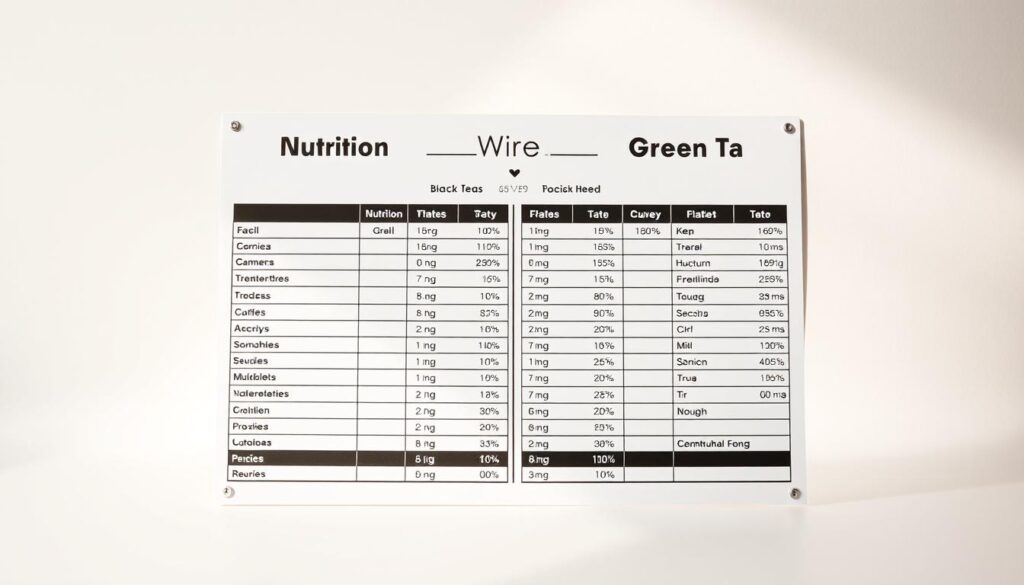

Black Tea vs Green Tea
Black and green teas are very low in calories. They’re great for those watching their diet. Without milk, sugar, or other extras, they have almost no calories.
Calorie and Carbohydrate Breakdown
The nutritional profile of tea is quite straightforward:
- Calories per 8-ounce serving: About 2-3 calories
- Carbohydrates: Less than 1 gram
- Protein: Very little
- Fat: Zero grams
Vitamins and Minerals Profile
Tea might not seem like a big deal nutritionally, but it has some good stuff:
- Manganese: Good for bones and metabolism
- Potassium: Keeps the heart in check
- Fluoride: Great for teeth
- Some vitamin B complex
Your handmade copper tea kettle can brew these nutritious teas. It ensures you enjoy every sip with minimal calories.
The Role of Oxidation in Tea Production
Tea production is a fascinating process that turns simple tea leaves into two distinct beverages. The main difference is oxidation, a chemical process that changes the tea’s flavor, color, and characteristics. When you brew tea in an antique copper tea kettle, understanding oxidation helps you see the differences between black and green teas.
Oxidation happens when tea leaves meet oxygen, causing chemical changes. This process is like how a copper tea pot gets a unique patina over time. This transformation makes the tea pot more special.
Black Tea Oxidation: A Complete Transformation
Black tea goes through full oxidation, which gives it a rich, robust flavor. The process includes several steps:
- Withering fresh tea leaves to reduce moisture
- Rolling leaves to break cell walls
- Exposing leaves to oxygen for complete oxidation
- Heating to stop oxidation and dry the leaves
Green Tea Oxidation: Preserving Delicate Characteristics
Green tea takes a different path. It has minimal oxidation, keeping the leaves fresh and light. Producers quickly heat the leaves after picking to stop oxidation, which:
- Stops enzymatic reactions
- Preserves green color
- Locks in delicate flavor compounds
- Retains more natural antioxidants
The oxidation process is an art form that transforms simple tea leaves into two distinctly different beverages, each with its own unique character and charm.
Cultural Significance and Traditions
Tea is more than a drink; it’s a cultural treasure that brings people together. It’s enjoyed in various ways, from the elegant copper kitchenware in traditional ceremonies to the traditional tea kettle. Each culture adds its own special touch to how they drink tea.
Tea traditions offer a peek into the social practices of the world. Each culture has its own tea rituals and customs. These reflect their history and social identity.
Black Tea’s Global Cultural Impact
Black tea has made a big mark on cultures worldwide. Here are some examples:
- British Afternoon Tea – A sophisticated social ritual
- Russian Samovar tea culture
- Indian masala chai traditions
Green Tea’s Cultural Heritage
Green tea is deeply valued in East Asian cultures. It’s more than just a drink:
- Japanese Chanoyu tea ceremony
- Chinese philosophical connections to tea drinking
- Meditative practices surrounding green tea preparation
| Culture | Tea Type | Unique Tradition |
|---|---|---|
| United Kingdom | Black Tea | Afternoon Tea Ritual |
| Japan | Green Tea | Chanoyu Ceremony |
| China | Green Tea | Philosophical Tea Practices |
| India | Black Tea | Masala Chai Culture |
Learning about these traditions shows us that tea is more than a drink. It’s a way to see into the social practices and history of cultures around the world.
Popular Brands and Varieties
Exploring tea is like finding a rich world of flavors and traditions. Whether you’re using a copper tea kettle or trying new teas, knowing popular brands can make your tea time better.
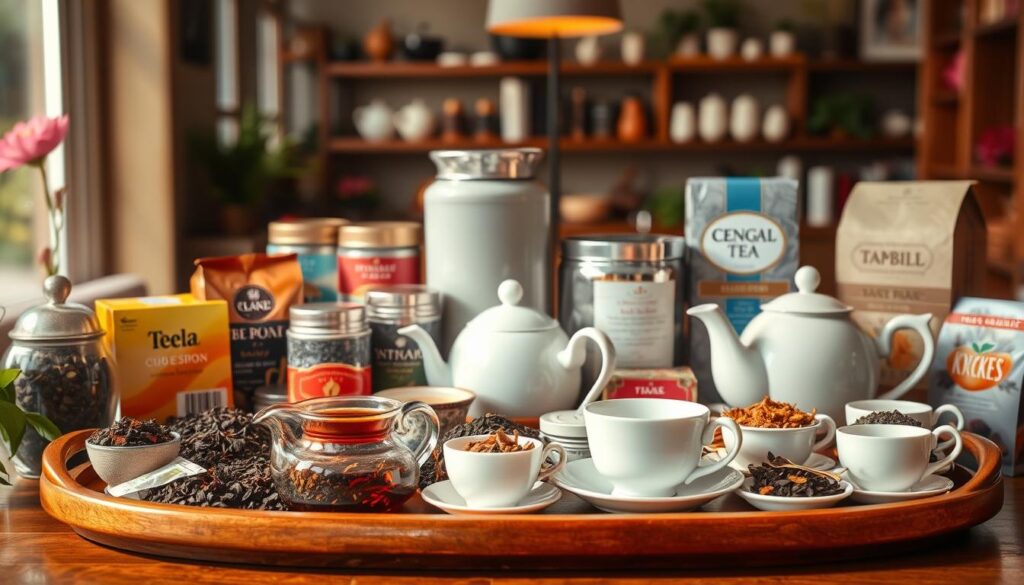

Black Tea vs Green Tea
Tea lovers have many choices for their perfect cup. Each type has its own special qualities that can make your tea time special, especially with a copper kettle.
Leading Black Tea Brands
Black tea fans have many great brands to pick from:
- Twinings: Known for classic Earl Grey and English Breakfast blends
- Harney & Sons: Offers premium loose-leaf and bagged tea collections
- Tazo: Provides innovative and flavorful black tea combinations
- Yorkshire Tea: Popular for strong, robust British-style black teas
Leading Green Tea Brands
Green tea fans can check out these amazing brands:
- Yogi Tea: Offers organic green tea with unique herbal blends
- Celestial Seasonings: Provides affordable and accessible green tea options
- Republic of Tea: Specializes in premium, single-origin green teas
- Ito En: Authentic Japanese green tea brand with traditional varieties
Finding the right tea is a personal journey. Your copper tea kettle can be the perfect friend in exploring these wonderful brands and varieties.
Choosing the Right Tea for You
Finding the perfect tea is a journey that’s all about you. It’s not just about taste. Your lifestyle, health goals, and daily routine matter a lot. A vintage tea kettle can make choosing your tea even more fun.
- Caffeine sensitivity
- Health and wellness objectives
- Flavor profile preferences
- Time of day consumption
Lifestyle Considerations
Your daily energy needs and lifestyle affect your tea choice. A best copper tea kettle can add to your brewing experience. It’s perfect if you want a fancy way to make tea.
| Lifestyle Factor | Black Tea | Green Tea |
|---|---|---|
| Morning Energy | Higher caffeine boost | Moderate caffeine level |
| Relaxation | Rich, robust flavor | Lighter, more subtle taste |
| Health Focus | Heart health support | Metabolism enhancement |
Personal Taste Exploration
Discovering your ideal tea is an adventure of taste and personal preference. Feel free to try different teas and brewing methods. Some people like both black and green teas at different times.
“The perfect cup of tea is the one that brings you joy and meets your individual needs.” – Tea Enthusiast
There’s no one “right” tea for everyone. Your choice should match your taste, lifestyle, and wellness goals.
The Environmental Impact of Tea Production
Tea production has big environmental challenges. Your tea choice affects ecosystems, farming communities, and global efforts. Whether you use a handmade or antique copper tea kettle, knowing the impact is key.
The tea industry faces big ecological challenges. It needs new solutions to protect our planet’s farms.
Challenges in Black Tea Farming
Black tea farming has big environmental hurdles:
- Significant deforestation for plantation expansion
- Heavy pesticide and chemical fertilizer usage
- Water resource depletion in growing regions
- Soil degradation from intensive farming practices
Green Tea Farming Sustainability
Green tea farming has its own environmental needs. Many green tea producers are leading the way with eco-friendly methods:
- Implementing organic cultivation methods
- Reducing chemical intervention
- Protecting biodiversity in tea-growing landscapes
- Developing water-conservation techniques
When picking your tea, look for organic, fair trade, or rainforest alliance labels. These show a commitment to the environment and sustainable farming.
Your tea choices can drive positive environmental change.
Supporting tea brands that care about the environment makes a difference. Choose brands with clear supply chains and sustainable farming practices.
Final Thoughts: Making Your Choice (Black Tea vs Green Tea)
Exploring black and green tea opens up a world of flavors, health perks, and cultural richness. Whether you use a classic copper tea pot or modern kitchenware, each sip is a unique adventure. It’s all about finding what you love.
Choosing between black and green tea is not a one-time decision. It’s about enjoying the variety that tea culture offers. You might prefer black tea in the morning for its strong taste. Then, green tea could be your go-to for a calming afternoon pick-me-up. The right copper kitchenware can make your tea time even more special.
Summary of Key Differences
Black tea is known for its bold taste and more caffeine, great for a morning boost. Green tea, on the other hand, has a lighter taste and lots of antioxidants. Both teas are great for your health, making them perfect for any time of day.
Tips for Enjoying Both Teas
Try out different brewing methods and tea types. Pair black tea with breakfast and green tea with lighter meals. Using a copper tea pot can make your tea time even more enjoyable. The tea world is vast and full of surprises, so keep exploring.

